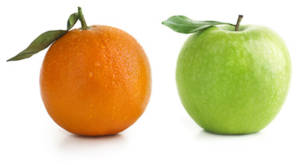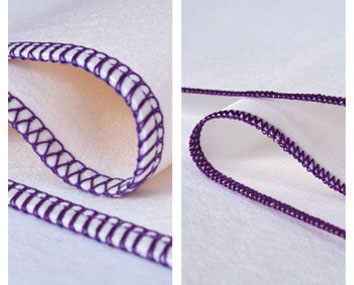Are you looking for a heavy duty sewing machine that will sew through leather like butter? Will you be sewing materials like denim or draperies? Or do you need a machine that will handle multiple layers of fabric at once? These type of fabrics and projects require a solid machine built for heavy jobs, unlike some of the more inexpensive beginner sewing machines.
This article will help you learn what to look for when shopping for the best heavy duty sewing machine and what features are a must.
What to Look for In a Heavy Duty Sewing Machine
When it comes to sewing machines there are several different categories you can examine -beginner or basic machines; machines made specifically for quilting; industrial machines; and also heavy duty sewing machines, which really just means they can handle thicker fabric and overall tougher and bigger sewing projects.
Really sewing machines for quilting can often times be under the same category as a heavy duty machine and industrial machines are definitely considered heavy duty, but most home sewers will not need the power of an industrial machine.
What Makes a Heavy Duty Machine Different?
Keep in mind that just because a machine isn’t specifically labeled “heavy-duty,” doesn’t mean it can’t handle heavier fabrics, like denim, leather, or multiple layers. So when you are shopping for a sewing machine for jeans and denim it is important to know what kind of features to look for because heavy-duty sewing machines are made differently than basic home or beginner sewing machines.
Many basic home or beginner sewing machines have plastic gears and relatively weak motors, which can easily wear out over time if you are consistently sewing heavy-duty materials and projects. This is not something you want to happen. There is nothing worse than the smell of burning plastic if you are in the middle of a project – a sure sign that your machine is not strong enough for the job.
Things to Keep In Mind When Shopping for a Heavy Duty Sewing Machine
Weight. A heavy duty machine typically weighs more than 15 pounds, with many being closer to 20 or more. This is important because you will be working with thicker, heavier fabrics and a lightweight machine can easily topple over or it will simply move along the table as you try to feed fabric through it.
A strong motor. Sewing machines that do well with heavy materials such as denim and leather need to have a strong motor so it can drive the needle through thick fabric over and over without slowing down or wearing down. Keep in mind that industrial machines used in factories have much bigger motors than heavy duty home machines because they are being used hours and hours on end.
Extra-high presser foot lift.
This is important because if you are going to sew through multiple layers of fabric or thick fabrics like leather, you will need to fit the fabric under the presser foot. I would say it needs to be able to handle at least 1/4 of an inch of fabric or more.
Leveling button. You may have seen this feature on Look for machines with a leveling button on the general purpose foot. This is a tiny button (usually it’s black) on the presser foot. When pressed, it lifts the front of the presser foot up so that it can climb over the thickness change in fabric. This comes in handy when sewing through the multi-layer side seam or the multi-layer bottom seam in jeans. This is typically the area of sewing jeans that causes the most broken needles.
Comparison of Three Top Heavy Duty Sewing Machines
| |
Janome DC2014 |
Janome HD3000 |
Singer 5532 |
|
|
|
|
|
 |
 |
 |
| Built-In Stitches |
50 |
18 |
23 |
| Computerized or Mechanical |
Computerized |
Mechanical |
Mechanical |
| Presser Feet Included |
|
5 |
4 |
| Easy Buttonholes |
3, one-step buttonholes |
1, one-step buttonhole |
1, one-step buttonhole |
| Needle Threader |
Automatic |
Automatic |
Automatic |
| Slider Speed Control |
Yes |
No |
No |
| Thread Tension |
Manual |
Manual |
Manual |
| Thread Cutter |
Yes, Manual |
Yes, Manual |
Yes, Manual |
| Bobbin Type |
Drop-In |
Front-Load |
Drop-In |
| Max Speed |
1,300 spm |
860 spm |
1,100 spm |
| Drop Feed |
Yes |
Yes |
Yes |
| Quilting Feet |
1 |
0 |
0 |
| Extension Table |
Not included |
Not included |
Not included |
| Weight |
18.2 lbs |
18.7 lbs |
17.5 lbs |
| Average Rating (out of 5) |
4.9 |
4.4 |
4.0 |
| Current Price |
|
|
|
In Depth Review of Each Machine
 Of the three machines here, this is the only one that is computerized and the only one with an electronic speed control. This allows you
Of the three machines here, this is the only one that is computerized and the only one with an electronic speed control. This allows you to modify the pace of your machine to fit your specific need. Set the speed to the “Max” if you want to sew quickly or to “Min” if you are teaching someone or if you need to sew something slowly and with precision. Every seamstress has different likes and from my experience, I use this feature all the time and it is one I wouldn’t want to do without.
to modify the pace of your machine to fit your specific need. Set the speed to the “Max” if you want to sew quickly or to “Min” if you are teaching someone or if you need to sew something slowly and with precision. Every seamstress has different likes and from my experience, I use this feature all the time and it is one I wouldn’t want to do without.
The Janome DC2014 is a great choice for a heavy-duty sewing machine. It easily sews through several layers of thick fabric such as denim, and it also has many other convenient and user-friendly features that are handy for all types of projects.
Features of the Janome DC2014:
- 50 built-in stitches with a great mix of utility and decorative stitches
- 3 styles of one-step buttonholes
- Automatic needle threader
- Memorized Up / Down needle stop position (you are able to either have the needle always stop down or up)
At 18 lbs it has a good amount of weight to it and it also comes with a hard case with convenient handle so it is definitely portable.
If you are interested in this machine, I have a complete in-depth review here.
You can also read customer reviews of the Janome DC2014 to assist you with your buying decision.
Though it is the higher priced of the three machines I’m reviewing here, Janome sewing machines are well known for their quality and prevision, and the DC2014 is my top pick for a heavy-duty sewing machine. A big plus about this machine is that even though it is powerful, it is also fairly quiet.
Janome sewing machines are among my favorite mid range sewing machines and this one is no exception.
This is a mechanical sewing machine with an extra high presser lift, 18 built-in stitches, built-in needle threader, and a free arm.
It weighs close to 19 pounds so it has a nice amount of weight to it. It has an aluminum body, and although the outside has some plastic, most of the internal structure is metal.
Users report that it easily sews through 10 or more layers of denim as well as heavy upholstery material and a “quilt sandwich” with no problem.
While I don’t think this is the top of the line as far as heavy-duty machines go, I chose it for a couple of reasons.
1. It sews up to 1100 stitches per minute and it does well with heavier material such as denim or leather.
2. It has a heavy duty metal frame and stainless steel bedplate.
3. I also chose this because of the price. If you need a heavy-duty machine but you are on a budget, this is a solid option. It is almost half the cost of Janome HD3000 and the Janome DC2014 mentioned above.
Let’s look at the features:
- 60% stronger motor than standard machines
- Convenient drop-in bobbin
- Automatic needle threader
- Extra-High presser foot lifter
- Stainless steel bed plate
This is a mechanical sewing machine so it doesn’t have any fancy electronic buttons but it still has 32 built-in stitches that you access with the turn of a knob and you can change the width of a stitch with another dial on the top.
Overall, this machine has great reviews. Users rave about the ease of use and how easy it is to learn to use it. Users were able to sew denim, thick purse straps, and other heavier materials with no problems.
One downside that was repeated but several users is the noise and some quilters say it is not the best choice for their craft.
Sometimes reading reviews from those who have the machine is the best way to decide on whether a machine is right for you. Check out the positive reviews from savvy seamstresses who bought this particular machine.
One Extreme Heavy Duty Sewing Machine  Option
Option
The previous three machines work well for most household and clothing projects.
What if you need a machine that is more industrial but you don’t have the space or the budget for a true industrial machine? This Sailrite Heavy Duty Sewing Machine is a great option.
This thing is heavy – weighing close to 40 lbs! So you definitely don’t have to worry about it walking around on you.
The Bottom Line on Heavy Duty Sewing Machines
If you want a machine that can handle big projects and heavy fabrics, as well as having durability to stand the test of time, then a heavy duty sewing machine is a good choice.
Get the best quality sewing machine you can. It can easily last for years and be passed down to a child or grandchild if desired.
I’m sure one of the 3 machines mentioned above will suit your needs and your budget for a heavy duty sewing machine. You can always check out Amazon.com for other heavy duty sewing machines and to read reviews and compare price ranges. Keep in mind that people often buy older sewing machines and off of craigslist or ebay. These can be good options too and its no surprise that a lot of these machines are still ticking after 50+ years.
and to read reviews and compare price ranges. Keep in mind that people often buy older sewing machines and off of craigslist or ebay. These can be good options too and its no surprise that a lot of these machines are still ticking after 50+ years.
Let me know if you have any questions. I do my best to respond to everyone 
from Sewing Machine Savvy – Best Reviews and Comparisons http://www.sewingmachinesavvy.com/best-heavy-duty-sewing-machines/
sewers, quilters, and this brand also has a popular serger sewing machine. The best selling sewing machine on Amazon right now is the Brother CS6000i – an affordably priced machine perfect for a beginner or advanced seamstress.





